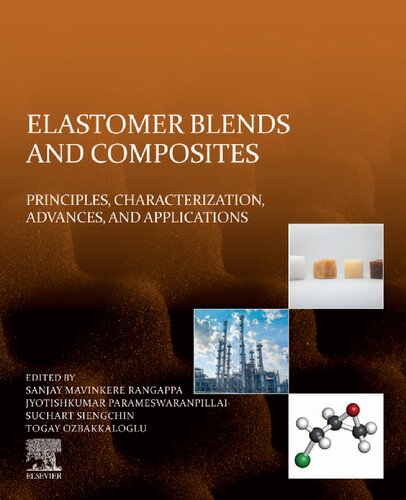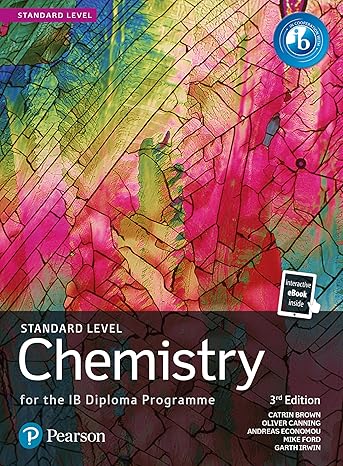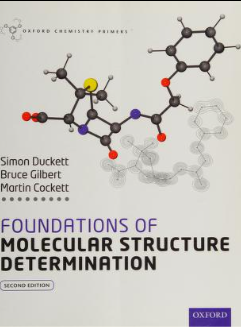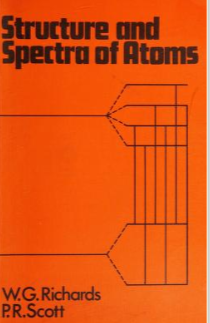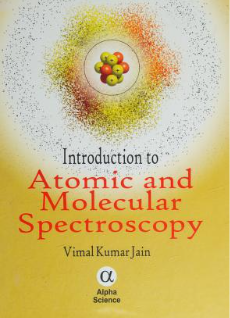References [1] R.J. Young, P.A. Lovell, Introduction to Polymers, third ed., CRC Press, Boca Raton, FL, 2011. [2] I.W. Hamley, The Physics of Block Copolymers, Oxford University Press, New York, 1998. [3] R.J. Spontak, N.P. Patel, Thermoplastic elastomers: fundamentals and applications, Curr. Opin. Colloid Interface Sci. 5 (2000) 333e340. [4] G. Holden, H.R. Kricheldorf, R.P. Quirk, Thermoplastic Elastomers, third ed., Hanser, Munich, 2004. [5] A. Hotta, E. Cochran, J. Ruokolainen, V. Khanna, G. Fredrickson, E. Kramer, Y.-W. Shin, F. Shimizu, A. Cherian, P. Hustad, J. Rose, G. Coates, Semicrystalline thermoplastic elastomeric polyolefins: 392 Elastomer Blends and Composites advances through catalyst development and macromolecular design, Proc. Natl. Acad. Sci. U.S.A. 103 (2006) 15327e15332. [6] Forum on block copolymers for nanotechnology applications, in: P. Mu¨ller-Buschbaum (Ed.), ACS Appl. Mater. Interfaces 9 (2017) 31213e32412. [7] C.M. Bates, F.S. Bates, 50th anniversary perspective: block polymersdpure potential, Macromolecules 50 (2017) 3e22. [8] S.I. Rosenbloom, D.T. Gentekos, M.N. Silberstein, B.P. Fors, Tailor-made thermoplastic elastomers: customisable materials via modulation of molecular weight distributions, Chem. Sci. 11 (2020) 1361e1367. [9] J. Markarian, Processing and recycling advantages drive growth in thermoplastic elastomers, Plast. Adhes. Compound. 6 (2004) 22e25. [10] C.-C. Kim, H.-H. Lee, K.H. Oh, J.-Y. Sun, Highly stretchable, transparent ionic touch panel, Science 353 (2016) 682e687. [11] C. Creton, G.J. Hu, F. Deplace, L. Morgret, K.R. Shull, Large-strain mechanical behavior of model block copolymer adhesives, Macromolecules 42 (2009) 7605e7615. [12] J.E. Puskas, Y. Chen, Biomedical application of commercial polymers and novel polyisobutylene�based thermoplastic elastomers for soft tissue replacement, Biomacromolecules 5 (2004) 1141e1154. [13] M. El Fray, P. Prowans, J.E. Puskas, V. Alstadt, Biocompatibility and fatigue properties of polystyrene-polyisobutylene-polystyrene, an emerging thermoplastic elastomeric biomaterial, Biomacromolecules 7 (2006) 844e850. [14] Cathy DZBH, Global thermoplastic elastomers (TPEs) market 2020 with top countries data, BEC Materials (2020). www.becmaterials.com/news/601Global_ Thermoplastic_Elastomers_Market_ 2020_With_Top_Countries_Data. [15] Thermoplastic elastomer market to reach USD 27.8 billion by 2024, Forencis Research, September 27, 2019. www.forencisresearch.com/press-release/thermoplastic-elastomer-market/. [16] W.L. Semon, G.A. Stahl, History of vinyl chloride polymers, J. Macromol. Sci. A: Chem. 15 (1981) 1263e1278. [17] L. Leibler, Theory of microphase separation in block copolymers, Macromolecules 13 (1980) 1602e1617. [18] M.W. Hamersky, S.D. Smith, A.O. Gozen, R.J. Spontak, Phase behavior of triblock copolymers varying in molecular asymmetry, Phys. Rev. Lett. 95 (2005) 168306. [19] M.W. Matsen, Effect of architecture on the phase behavior of AB-type block copolymer melts, Macromolecules 45 (2012) 2161e2165. [20] W. Jiang, Y. Qiang, W. Li, F. Qiu, A.-C. Shi, Effects of chain topology on the self-assembly of AB-type block copolymers, Macromolecules 51 (2018) 1529e1538. [21] J.O. Akindoyo, M.D.H. Beg, S. Ghazali, M.R. Islam, N. Jeyaratnam, A.R. Yuvaraj, Polyurethane types, synthesis and applications e a review, RSC Adv. 6 (2016) 114453e114482. [22] J. Datta, P. Kasprzyk, Thermoplastic polyurethanes derived from petrochemical or renewable re�sources: a comprehensive review, Polym. Eng. Sci. 58 (2018) E14eE35. [23] L. Bartolome´, J. Aurrekoetxea, M.A. Urchegui, W. Tato, The influences of deformation state and experimental conditions on inelastic behaviour of an extruded thermoplastic polyurethane elas�tomer, Mater. Des. 49 (2013) 974e980. [24] M. Charlon, B. Heinrich, Y. Matter, E. Couzigne´, B. Donnio, L. Ave´rous, Synthesis, structure and properties of fully biobased thermoplastic polyurethanes, obtained from a diisocyanate based on modified dimer fatty acids, and different renewable diols, Eur. Polym. J. 61 (2014) 197e205. Chapter 17 � Advances in thermoplastic elastomers 393 [25] K.L. Kull, R.W. Bass, G. Craft, T. Julien, E. Marangon, C. Marrouat, J.P. Harmon, Synthesis and characterization of an ultra-soft poly(carbonate urethane), Eur. Polym. J. 71 (2015) 510e522. [26] R.J. Cella, Morphology of segmented polyester thermoplastic elastomers, J. Polym. Sci., Polym. Symp. 42 (1973) 727e740. [27] S.M. Grayson, J.M.J. Fre´chet, Synthesis and surface functionalization of aliphatic polyether den�drons, J. Am. Chem. Soc. 122 (2000) 10335e10344. [28] T. Nishi, T.K. Kwei, Improvement of the impact strength of a blend of poly(vinyl chloride) with copolyester thermoplastic elastomer by heat treatment, J. Appl. Polym. Sci. 20 (1976) 1331e1337. [29] L. Vogt, F. Ruther, S. Salehi, A.R. Boccaccini, Poly(glycerol sebacate) in biomedical applicationsda review of the recent literature, Adv. Health. Mater. (2021) 2002026. [30] I.A. Carrascal, A. Pe´rez, J.A. Casado, S. Diego, J.A. Polanco, D. Ferren˜o, J.J. Martı´n, Experimental study of metal cushion pads for high speed railways, Construct. Build. Mater. 182 (2018) 273e283. [31] S. Seyedin, P. Zhang, M. Naebe, S. Qin, J. Chen, X. Wang, M. Razal, Textile strain sensors: a review of the fabrication technologies, performance evaluation and applications, Mater. Horiz. 6 (2019) 219e249. [32] N.J. Sijbrandi, A.J. Kimenai, E.P.C. Mes, R. Broos, G. Bar, M. Rosenthal, Y. Odarchenko, D.A. Ivanov, P.J. Dijkstra, J. Feijen, Synthesis, morphology, and properties of segmented poly(ether amide)s with uniform oxalamide-based hard segments, Macromolecules 45 (2012) 3948e3961. [33] S. Armstrong, B. Freeman, A. Hiltner, E. Baer, Gas permeability of melt-processed poly(ether�block-amide) copolymers and the effects of orientation, Polymer 53 (2012) 1383e1392. [34] K.A. Murray, J.E. Kennedy, B. McEvoy, O. Vrain, D. Ryan, R. Cowman, C.L. Higginbotham, Effects of gamma ray and electron beam irradiation on the mechanical, thermal, structural and physi�cochemical properties of poly(ether-block-amide) thermoplastic elastomers, J. Mech. Behav. Biomed. Mater. 17 (2013) 252e268. [35] A.K. Bhowmick, J.R. White, Thermal, UV- and sunlight aging of thermoplastic elastomeric natural rubber-polyethylene blends, J. Mater. Sci. 37 (2002) 5141e5151. [36] J. Feldthusen, B. Ivan, A.H.E. Mu¨ller, Synthesis of linear and star-shaped block copolymers of isobutylene and methacrylates by combination of living cationic and anionic polymerizations, Macromolecules 31 (1998) 578e585. [37] S.L. Aggarwal, Structure and properties of block polymers and multiphase polymer systems: an overview of present status and future potential, Polymer 17 (1976) 938e956. [38] TPE market approaches maturity, Plast. Rubber Wkly. (October 18, 2016). [39] A.N. Wilkinson, M.L. Clemens, V.M. Harding, The effects of SEBS-g-maleic anhydride reaction on the morphology and properties of polypropylene/PA6/SEBS ternary blends, Polymer 45 (2004) 5239e5249. [40] J.K. Oh, Polylactide (PLA)-Based amphiphilic block copolymers : synthesis, self-assembly, and biomedical applications, Soft Matter 7 (2011) 5096e5108. [41] H. Fischer, S. Poser, Liquid crystalline block and graft copolymers, Acta Polym. 47 (1996) 413e428. [42] P. Figueiredo, S. Geppert, R. Brandsch, G. Bar, R. Thomann, R.J. Spontak, W. Gronski, R. Samlenski, P. Mu¨ller-Buschbaum, Ordering of cylindrical microdomains in thin films of hybrid isotropic/ liquid crystalline triblock copolymers, Macromolecules 34 (2001) 171e180. [43] C.S. Marvel, G.E. Inskeep, R. Deanin, A. Juve, C. Schroeder, M. Goff, Copolymers of butadiene with halogenated styrenes, Ind. Eng. Chem. 39 (1947) 1486e1490. [44] X. Wang, M. Goswami, R. Kumar, B.G. Sumpter, J. Mays, Morphologies of block copolymers composed of charged and neutral blocks, Soft Matter 8 (2012) 3036. 394 Elastomer Blends and Composites [45] K.P. Mineart, B. Lee, R.J. Spontak, A solvent-vapor approach toward the control of block ionomer morphologies, Macromolecules 49 (2016) 3126e3137. [46] D. Park, C.J. Weinman, J.A. Finlay, B.R. Fletcher, M.Y. Paik, H.S. Sundaram, M.D. Dimitriou, K.E. Sohn, M.E. Callow, J.A. Callow, D.L. Handlin, C.L. Willis, D.A. Fischer, E.J. Kramer, C.K. Ober, Amphiphilic surface active triblock copolymers with mixed hydrophobic and hydrophilic side chains for tuned marine fouling-release properties, Langmuir 26 (2010) 9772e9781. [47] M.L. Adams, A. Lavasanifar, G.S. Kwon, Amphiphilic block copolymers for drug delivery, J. Pharmacol. Sci. 92 (2003) 1343e1355. [48] H.A. Al-Mohsin, K.P. Mineart, D.P. Armstrong, R.J. Spontak, Tuning the performance of aqueous photovoltaic elastomer gels by solvent polarity and nanostructure development, J. Polym. Sci. B Polym. Phys. 55 (2017) 85e95. [49] Z. Dai, J. Deng, H. Aboukeila, J. Yan, L. Ansaloni, K.P. Mineart, M. Giacinti Baschetti, R.J. Spontak, L. Deng, Highly CO2-permeable membranes derived from a midblock-sulfonated multiblock polymer after submersion in water, NPG Asia Mater. 11 (2019) 1e7. [50] B.S.T. Peddinti, S.N. Downs, J. Yan, S.D. Smith, R.A. Ghiladi, V. Mhetar, R. Tocchetto, A. Griffiths, F. Scholle, R.J. Spontak, Rapid and repetitive inactivation of SARS-CoV-2 and human coronavirus on self-disinfecting anionic polymers, Adv. Sci. 8 (2021) 2003503. [51] I.W. Hamley (Ed.), Developments in Block Copolymer Science and Technology, Wiley, Chichester, 2004. [52] T. Smart, H. Lomas, M. Massignani, M.V. Flores-Merino, L.R. Perez, G. Battaglia, Block copolymer nanostructures, Nano Today 3 (2008) 38e46. [53] F. Bates, G. Fredrickson, Block copolymer thermodynamics: theory and experiment, Annu. Rev. Phys. Chem. 41 (1990) 525e557. [54] M.W. Matsen, M. Schick, Self-assembly of block copolymers, Curr. Opin. Colloid Interface Sci. 1 (1996) 329e336. [55] S.D. Smith, R.J. Spontak, M.M. Satkowski, A. Ashraf, A.K. Heape, J.S. Lin, Microphase-separated poly(styrene-b-isoprene)n multiblock copolymers with constant block lengths, Polymer 35 (1994) 4527e4536. [56] R.J. Spontak, S.D. Smith, Perfectly-alternating linear (AB)n multiblock copolymers: effect of mo�lecular design on morphology and properties, J. Polym. Sci. B Polym. Phys. 39 (2001) 947e955. [57] M. Steube, T. Johann, E. Galanos, M. Appold, C. Ruttiger, M. Mezger, M. Gallei, A.H.E. Mu¨ller, G. Floudas, H. Frey, Isoprene/styrene tapered multiblock copolymers with up to ten blocks: synthesis, phase behavior, order, and mechanical properties, Macromolecules 51 (2018) 10246e10258. [58] C. Wahlen, J. Blankenburg, P. von Tiedemann, J. Ewald, P. Sajkiewicz, A.H.E. Mu¨ller, G. Floudas, H. Frey, Tapered multiblock copolymers based on farnesene and styrene: impact of biobased poly�diene architectures on material properties, Macromolecules 53 (2020) 10397e10408. [59] G.M. Grason, R.D. Kamien, Interfaces in diblocks: a study of miktoarm star copolymers, Macromolecules 37 (2004) 7371e7380. [60] N.A. Lynd, F.T. Oyerokun, D.L. O’Donoghue, D.L. Handlin, G.H. Fredrickson, Design of soft and strong thermoplastic elastomers based on nonlinear block copolymer architectures using self�consistent-field theory, Macromolecules 43 (2010) 3479e3486. [61] J.E. Poelma, K. Ono, D. Miyajima, T. Aida, K. Satoh, C.J. Hawker, Cyclic block copolymers for controlling feature sizes in block copolymer lithography, ACS Nano 6 (2012) 10845e10854. [62] G.M. Grason, R.D. Kamien, Self-consistent field theory of multiply branched block copolymer melts, Phys. Rev. E 71 (2005) 051801. [63] S.J. Diamanti, V. Khanna, A. Hotta, R.C. Coffin, D. Yamakawa, E.J. Kramer, G.H. Fredrickson, G.C. Bazan, Tapered block copolymers containing ethylene and a functionalized comonomer, Macromolecules 39 (2006) 3270e3274
ادامه ...
بستن ...
